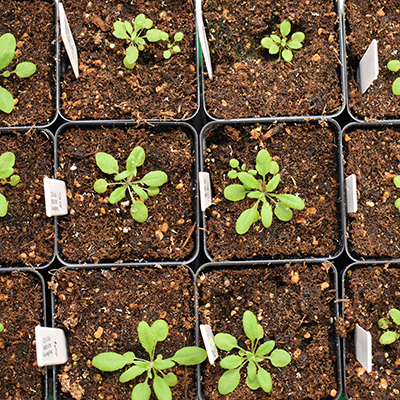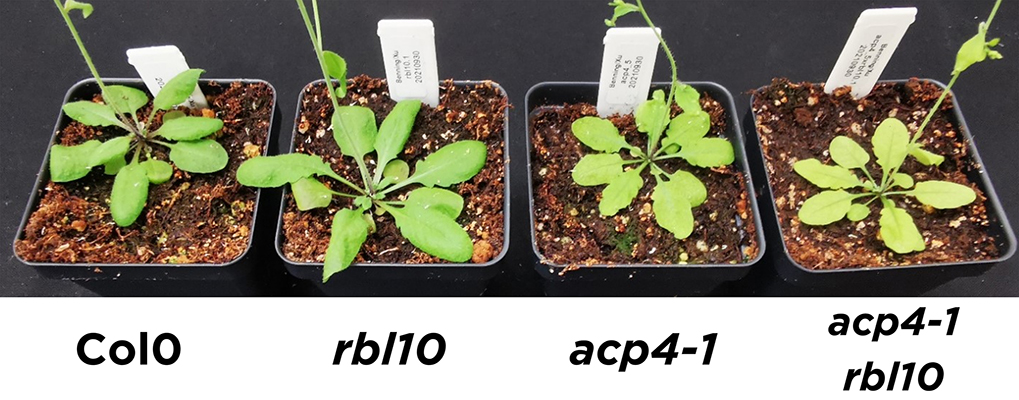A tale of two proteins: Fundamental research could make growing better crops like clockwork
Article Highlights
- Researchers from the Benning lab are studying how the protein RBL10 affects photosynthetic membrane lipid metabolism, an essential process in photosynthesis.
- Their most recent study looks at the potential interaction of RBL10 and ACP4, another protein, in lipid biosynthesis.
- In the end, the researchers were able to determine that RBL10 and ACP4 both affect lipid biosynthesis, but they “act independently in parallel ways."
Have you ever taken something apart, like a watch, to see how it works by looking at the parts inside individually?

That's not altogether different from a common strategy used by scientists who are working to better understand how photosynthesis works, including the researchers led by Christoph Benning at Michigan State University.
The team, which is part of the MSU-DOE Plant Research Laboratory, or PRL, studies the chloroplast, the piece of cellular machinery where photosynthesis occurs in the plant. The chloroplast is like the inside of a watch, where each individual component is essential for the larger system to function.
In a recent study published in the journal Plant Physiology, Benning and his colleagues have started to reveal how some of those components work together to affect the creation of lipids in the chloroplast’s photosynthetic membranes.
This fundamental understanding would allow researchers to engineer crop plants that better meet our needs in a changing climate, the team said.

Yang Xu, first author of the study, former Benning lab postdoc and assistant professor at the University of Guelph. Courtesy photo.
“If we have a better understanding of how lipids are synthesized in plants, we can try to improve plant performance,” said Yang Xu, first author on the study and former postdoc in the Benning lab. Xu is now an assistant professor at the University of Guelph in Canada.
The team’s new study builds on the group’s previous work that began with studying an enzyme known as rhomboid-like protein 10, abbreviated RBL10. The function of RBL10 is largely mysterious, though it was thought to degrade other proteins in the chloroplast membrane.
In 2019, working with the model organisms Arabidopsis thaliana, the team showed that RBL10 affected an essential metabolic process in photosynthesis. In particular, the enzyme influenced how a plant created compounds called lipids used in photosynthetic chloroplast membranes.
In a follow up study, the Benning lab identified a list of proteins that RBL10 interacts with in the chloroplast. Another important protein in chloroplast lipid biosynthesis — acyl carrier protein 4 or ACP4 — caught the researchers’ eyes.
Now, their most recent publication, “is about testing the relevance of the interaction between ACP4 and RBL10,” Xu said.

The researchers identified four Arabidopsis lines to study. The first was the control plant or wild type, which functions as it does in nature. The other three lines were mutants: one of which had a reduced amount of ACP4, another had a reduced amount of RBL10 and the final was deficient in both proteins.
Using this genetic dissection approach, the researchers were able to discern the function of these components in plant lipid metabolism.
In the end, the researchers were able to determine that RBL10 and ACP4 both affect lipid biosynthesis, but they “act independently in parallel ways,” said Benning, who is a University Distinguished Professor in the Department of Biochemistry and Molecular Biology and the PRL director.
“This paper rules out one possibility how these proteins work in plant lipid metabolism,” Benning said. “But we need to look for other possibilities. We still don’t know the answers.”
RBL10 is one of the few characterized rhomboid proteins in plants, for which a possible role in a cellular process has been proposed, but the Benning lab is still looking for how exactly RBL10 functions.
This study was supported by the Division of Chemical Sciences, Geosciences and Biosciences, Office of Basic Energy Sciences of the United States Department of Energy; the National Institute of Health; US Department of Agriculture, Agricultural Research Service; and Michigan State University AgBioResearch. This work was also supported by the US Department of Energy, Office of Science, Office of Biological and Environmental Research, Genomic Science Program and US National Science Foundation.
Banner image: A tray of Arabidopsis thaliana plants. Credit: Kara Headley